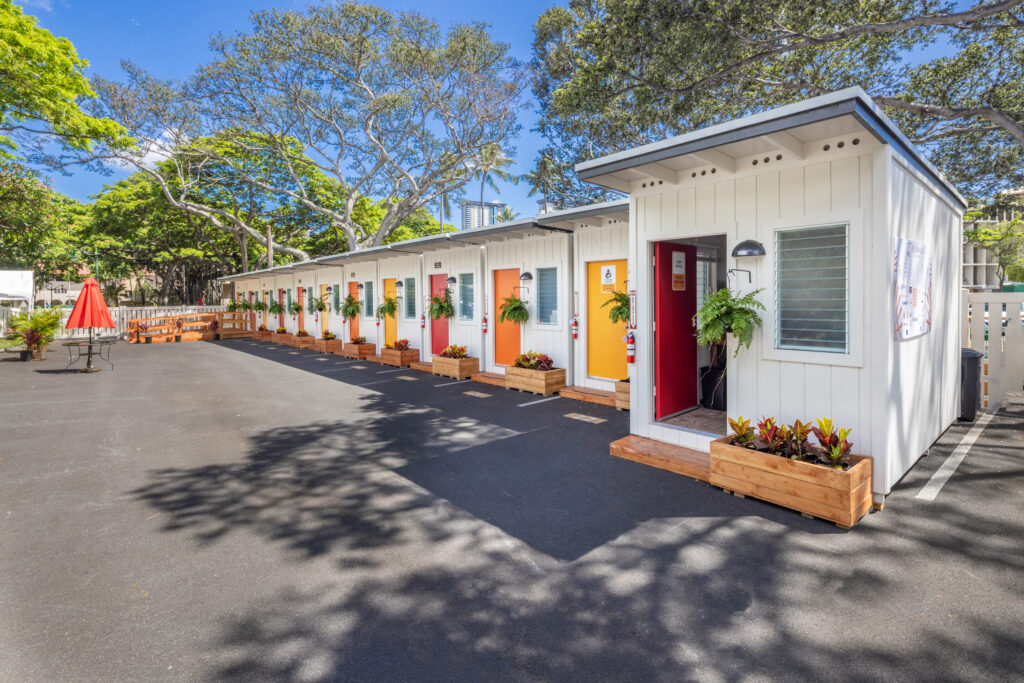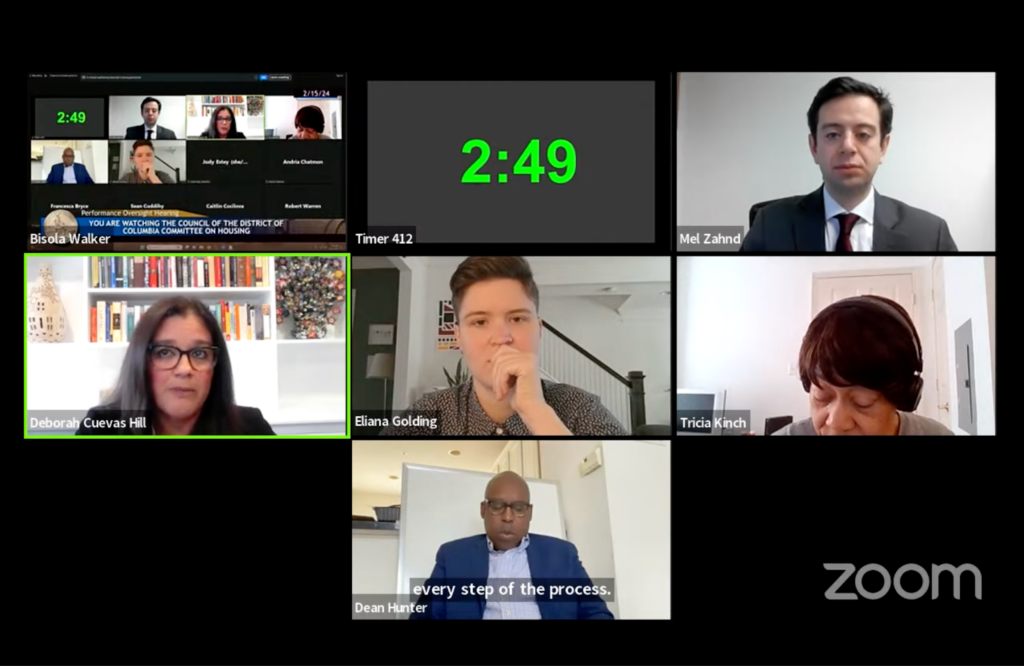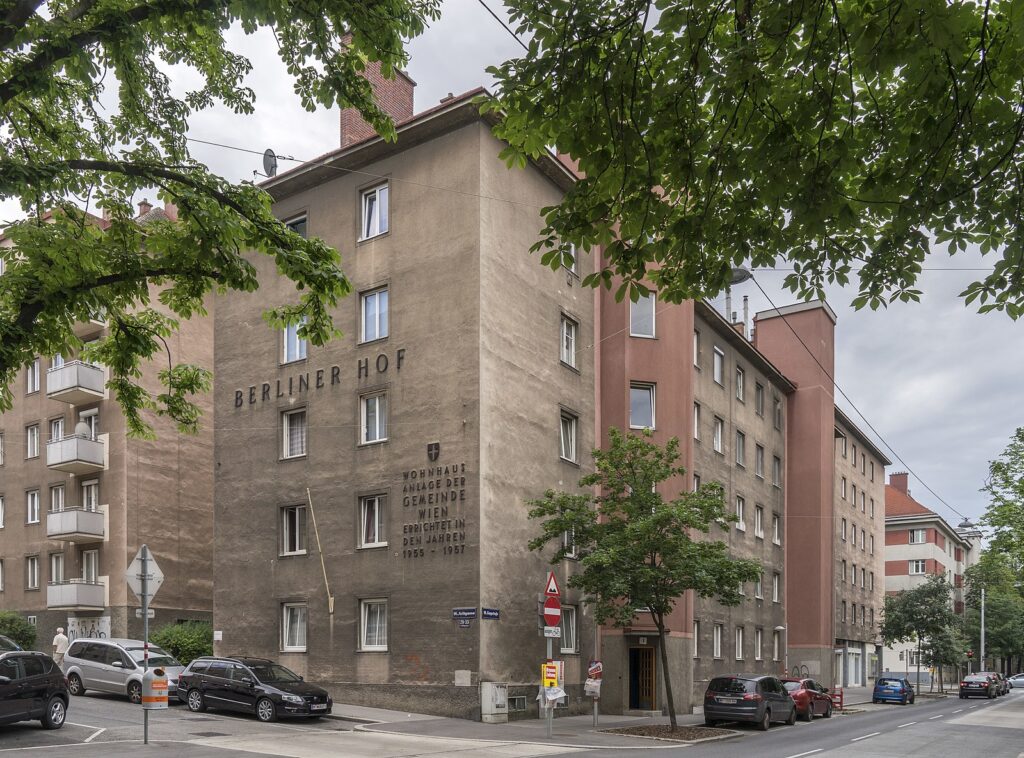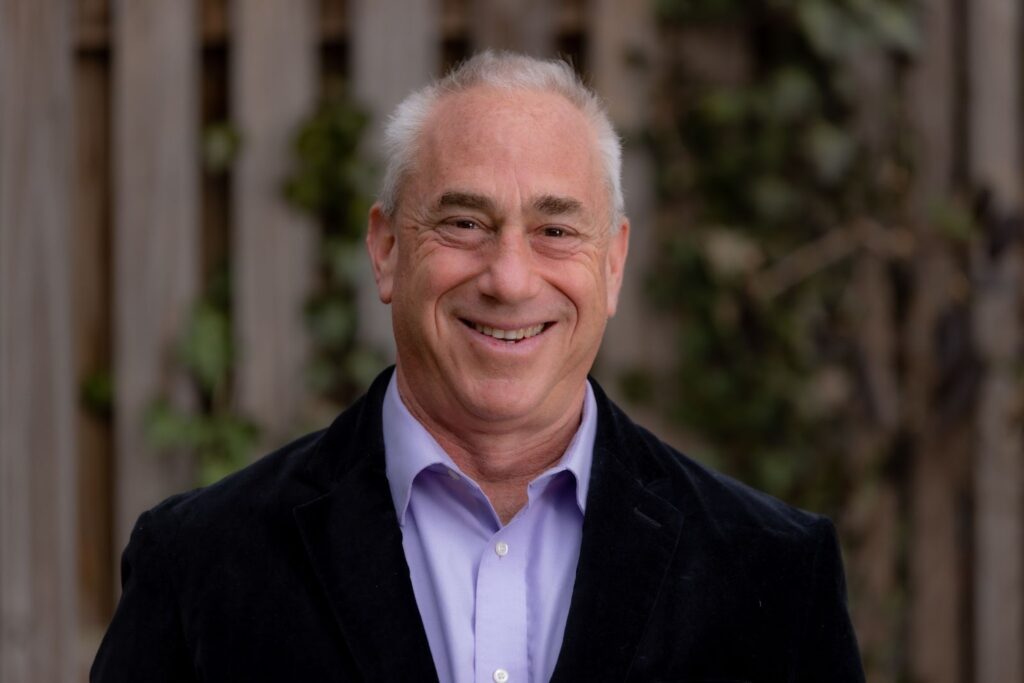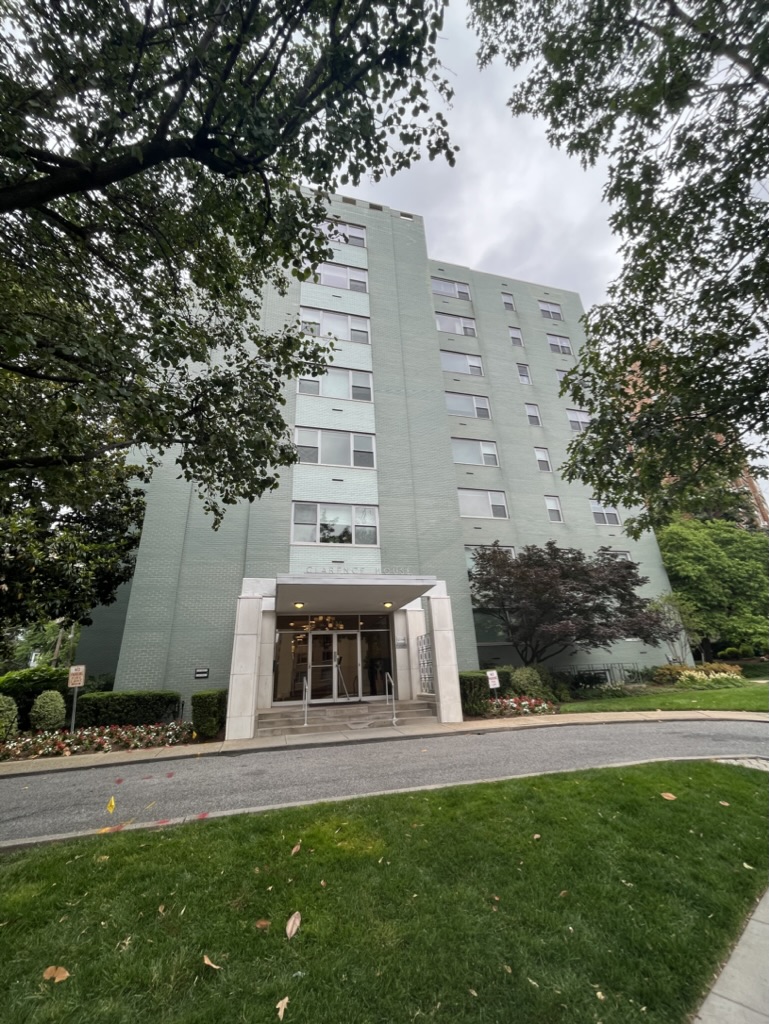In Hawaii, one developer is working with a new housing model that promises to better address homelessness — thanks to changes to zoning laws making it easier to build affordable housing.
The model, called “kauhale,” draws from Indigenous Hawaiian housing practices and combines modest bedrooms with communal living spaces like bathrooms, dining rooms and living rooms. According to housing advocates interviewed for this article, it’s meant to create a “supportive community” — to build not just houses, but homes.
Nonprofit developer HomeAid Hawaii has plans to build kauhale across the state, as part of a growing movement to address Hawaii’s homelessness crisis. As part of that effort, Hawaii Governor Josh Green recently issued a round of emergency proclamations that temporarily suspend the bulk of the state’s housing regulations.
The proclamations are meant to make it easier for companies to construct affordable housing. At a time when housing affordability is reaching record lows, according to one Fox Business report, that is no simple task.
Developers nationwide say they face many stiff barriers when building affordable and accessible housing that addresses homelessness. Not only do they contend with rising construction costs, according to one report by the National Association of Home Builders, they say they are caught within political systems that make construction slower and more expensive and, as a result, are struggling to keep up with demand.
This lack of affordable housing is a primary driver of the rising unhoused population, according to a new study released by the University of California at San Francisco in June.
But in the midst of this crisis, HomeAid Hawaii believes it has developed a model that can overcome those obstacles, creating affordable, supportive housing for those who need it.
Short of supportive?
Jet Flegette, an artist and vendor with Street Sense Media, has watched many of her friends and colleagues move into housing after years of experiencing homelessness. Flegette also experienced homelessness for five years. But sometimes, she said her peers can fall out of their housing programs. Not because of inadequate funding, she said, but because of a lack of social support — a lack of community.
“People just become lonely,” Flegette said. “A lot of people that get housing, they come back to the neighborhood and act like they’re still homeless. They have to go back to the neighborhood just to feel normal again. They’ll put you in a place that’s surrounded by, well, snooty people. Cut off from your friends. You just don’t feel supported.”
Supportive housing, according to the U.S. Interagency Council on Homelessness, describes a blend of inexpensive, community-oriented housing and voluntary wraparound services. It’s meant to provide vulnerable communities — especially disabled and unhoused people — with a stable and fulfilling place to live.
This broad framework informs the construction of many different kinds of housing, including the kauhale model and, especially in Europe, social housing.
There are some key differences between social housing, which has become hotly debated since D.C. lawmakers pitched the project last year, and supportive housing. According to House Our Neighbors, a political committee of Seattle-based street paper Real Change News, social housing developments are owned by the government and low-income tenants live alongside more affluent ones. However, supportive housing projects can be privately owned and do not always serve mixed-income residents.
Supportive housing projects have varying levels of success — while a development in Connecticut might facilitate a sense of community and offer full-scale wraparound services, another in Arkansas might be isolating or offer less expansive care.
This could be due to the political environment, a failure of wraparound services or a lack of protection from rent hikes or shoddy repairs, realities that have often been covered by this newspaper.
Affordability or bust
Building housing is expensive. According to one explainer by The Urban Institute, a D.C.-based think tank, developers are subject to a host of costs — including buying the property, getting construction materials and running the company itself. Sometimes, if investors or lenders aren’t convinced the project will make a profit, they can shut it down before it has a chance to begin.
This leaves developers in a tenuous position — one where affordability is vital. Developers interviewed for this article respond to this pressure in a variety of ways.
Some housing executives say they stay focused on the technical barriers to building housing — the time, energy and cost of construction. They invest in out-of-the-box solutions, like tiny homes, 3D printing or hemp-sourced construction materials as ways to cut costs.
One such company, Connect Homes, uses prefabricated — or “prefab” — housing, building the homes in advance and later shipping them.
“The entire purpose of our company is to bring modern living to everyone, to make it more affordable,” said Connect Homes Marketing Leader Whitney Walker.
They’ve installed hundreds of beds and several shelters across California, ranging from Long Beach to Rohnert Park.
Meanwhile, three developers interviewed for this article agreed that the real challenge of housing is not technical — it’s political.
Executives at one such company, WheelPad, argue that housing lobbyists use overly-strict building codes to drive out competition, and — more commonly — that government doesn’t do enough to prop up innovation.
WheelPad creates and installs home additions that make housing more accessible, like the lifts that allow wheelchair users to bypass stairs. The add-ons are distinct because they can be built in a fraction of the time of competitors. But right now, the cost is prohibitive.
“Systems are built to utilize existing technologies,” said RJ Adler, director of growth at WheelPad. “If you want to [get a WheelPad unit] today, it’s a lot like installing solar panels on your roof in 2005. You have to have the time, money, energy, or expertise, or the right combination of those.”
If governmental subsidies supported the new technology — like it now does for renewable energy — accessibility-focused companies would be able to expand, said Adler.
Rather than investing in expensive, cutting-edge technology, HomeAid Hawaii achieves affordability by building a broad base of support, according to Kimo Carvalho, the executive director of HomeAid Hawaii.
Part of a national network of HomeAid developers and partners, HomeAid Hawaii is able to secure discounted building materials, supplies and equipment. Volunteer laborers in the region — including architects, construction managers and civil site engineers — also donate their time, leading to a model that saves an average of 80% on construction costs per project.
Unlike Adler, Carvalho is less concerned with governmental support. In his six years working for the Institute for Human Services, Hawaii’s largest homeless service agency, he described his relationship with the government as “always frustrating.” Today, he prioritizes his relationships with the people working on the ground.
“We try to lay at the perfect intersection between the building industry, the homeless providers and homeless people themselves,” Carvalho said.
Our own worst enemy
Developers don’t just have to navigate bureaucracy. NIMBY — an acronym for “not in my backyard” — describes the phenomenon where residents lobby against the construction of developments in their neighborhoods.
They oppose the development of everything from wind farms to prisons to affordable housing in their neighborhoods, according to Dr. Jennifer Wolch, a professor of urban planning and dean of the University of California Berkeley College of Environmental Design.
Wolch described the dynamic in her home state of California. “It’s like, ‘We’re so liberal, we’re so progressive, but we don’t want any tall buildings downtown next to the transit stop,’” Wolch said. “There’s a lot of resistance to affordable housing. There’s the whole NIMBY problem and a lot of things just get stopped.”
The loudest anti-development voices are often wealthy and politically connected, said Wolch. The position, often justified by a desire to maintain an area’s property value or keep out people of color or lower-income residents, according to Wolch, is criticized as narrow-minded and harmful.
NIMBYism is considered a contributing factor to D.C.’s zoning laws, which — with one notable exception in Arlington — over-privilege the single-family residences that, according to Wolch, lower the amount of available space and drive up housing prices.
HomeAid Hawaii has an unusual approach to the challenge of working within housing policy: They don’t.
This year, Green released a round of emergency proclamations meant to address homelessness. Part of the governor’s platform to address Hawaii’s nation-leading rates of homelessness, the emergency proclamations allow developers to bypass much of the building codes and land-use restrictions that normally inhibit construction.
“One thing that gets me excited about working under the emergency proclamation is that we get to just be innovative,” said Carvalho.“When you have loosened regulations, that really allows you to develop the type of inventory that’s needed for the communities that you’re intending to serve.”
‘Supporting each other’
That freedom allows the developer to conduct “trauma-informed co-design,” which calls for deep communication between developers and the people they serve.
Under this framework, people experiencing homelessness can shape projects so that, according to Carvalho, they’re “not only stable but thriving within their community.”
This sometimes results in some unconventional developments, like the vast communities of tiny homes popping up around O’ahu. In Hawaii, where in some regions over half of homeless people are Indigenous according to one report released by Bridging the Gap Hawaii, that means elevating cultural housing practices.
“We’re building communities for the end user,” said Carvalho. “There are those magic touches that make a community feel like home. We want to consider how to elevate Indigenous culture and how [residents] practice those cultures within the communities we build.”
Kauhale, a Hawaiian word that translates to “village,” can exist in many forms, according to Hawaii’s Statewide Office on Homelessness and Housing Solutions (OHHS). But whether a kauhale community is made of tiny homes, prefab units or some other low-cost alternative, the model’s “defining feature,” according to the OHHS website, “is that it functions like a village, with people taking care of place and each other.”
There remain key differences between kauhale and other forms of social or communal living. For instance, residents of kauhale communities can stay as long as they need — there are no deadlines or expectations about when they should transition to market-rate housing.
Community members are also eventually responsible for the regular maintenance of their home, according to the OHHS. That means that, although maintenance costs may be roughly similar to other developments’, they are meant to decrease over time.
Kauhale has become the working model for many developments across the state, with Green aiming to build a dozen kauhale villages in the next three years. Kauhale, advocates say, might be a crucial step in facilitating the community and sense of belonging that’s missing from so many supportive housing projects.
“The kauhale model is establishing a new network of neighbors, friends and people who you’ve connected with on the streets,” said Carvalho. “Together, understanding each others’ collective trauma, collective goals and milestones. Supporting each other.”
